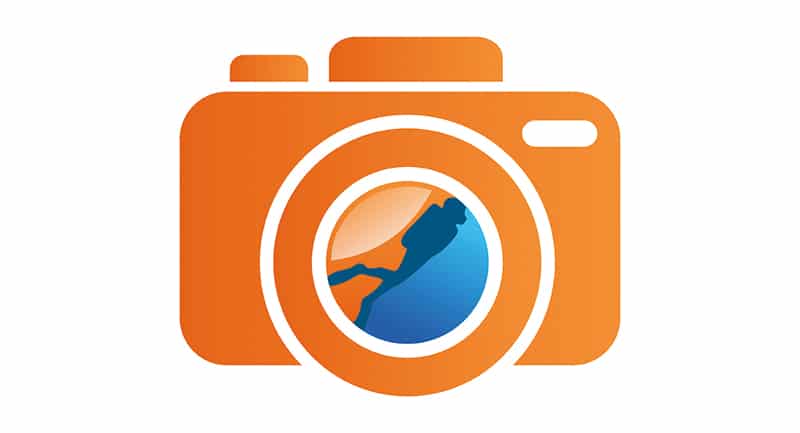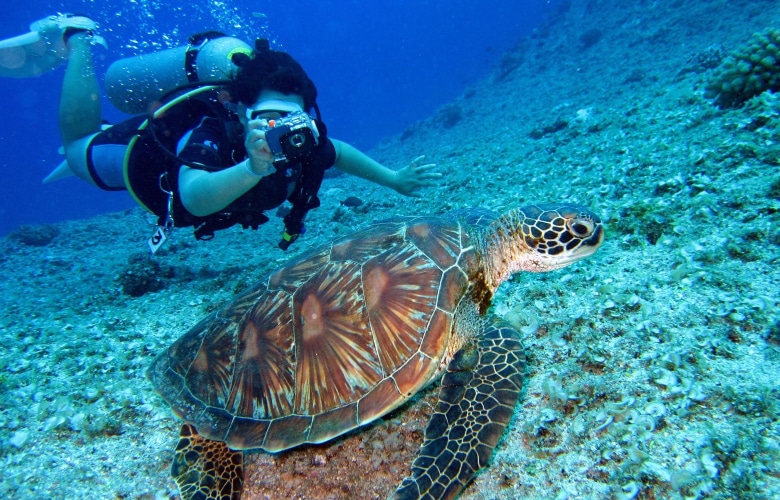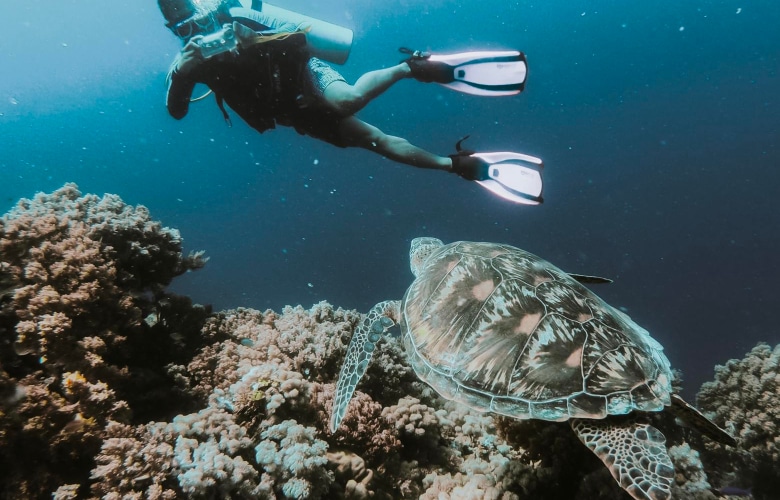News
Aperture, Shutter Speed, and ISO for Underwater Photography

By Carlo Piscioneri, Founder of Night Sky Pix.
When just starting out in low-light photography, trying to get your head around all the camera settings can be quite overwhelming. The purpose of this article is to get you up to speed with some of the most common terms related to camera settings, what they mean, and how they affect your images!
So whether you’re trying to shoot a starry night image, or into the cool depths of underwater photography, these principles will all apply equally.
Getting Started With Underwater Photography
If you’re planning on shooting underwater, getting to know your camera is extremely important. First off, to capture the best photos possible, you’ll need to set your camera to (M) Manual Mode.
Auto mode is great for daytime images, but in low-light situations where the conditions can constantly change, you’ll need manual mode and adjust your settings for the specific situation.
By doing this, you are taking control of your camera’s settings. Regardless if you are shooting underwater or above ground, this will make the biggest difference to your images.
Throughout the rest of this article, we’ll discuss the three Manual settings that all photographers need to look at when taking photos. They are aperture, shutter speed, and ISO.
Exposure Triangle
The term “exposure triangle”, is the combination of the three main components of photography.
Aperture, shutter speed, and ISO. All three work together to help bring out the best in your images and will determine the overall brightness of your pics.
Once you begin to understand how the three all relate to each other, you’ll have much more control of your camera’s abilities and settings, allowing you to adjust to the right settings for the right situation.
Below is a breakdown of each of these terms and what they do.
Aperture
This is the first common term that you should learn in any form of photography.
Simply put, an aperture is the size of the opening in the lens.
Think of aperture as an adjustable widening and narrowing of the lens, the wider the opening, the more light will pass through and make its way to the sensor, while the smaller the lens opening the less light is allowed to pass through.
While there are many types of visual devices that use a reference of apertures, such as binoculars and telescopes, they lack something that digital cameras have, which is a diaphragm that allows you to adjust the amount of light that reaches the camera’s sensor.
Camera settings with the aperture wide open allow more light into the image, resulting in a brighter photo. This is of the utmost importance when shooting in low light situations like night and underwater photography.
The aperture is measured in f-stops, a small aperture like f/1.8 is a wide opening, a large aperture like f/22 is a very narrow one.
The aperture is one of three camera settings that determine the overall exposure and brightness of an image, (how bright or dark the final image is).
Depth Of Field
The aperture also affects how much of the image is in focus (DOF). Wide apertures result in a creamy, unfocused background, while narrow apertures keep more of the image in focus.
Choosing A Higher Or Lower Aperture Setting?
Depending on the final outcome you want to achieve from photographing a scene, here are a few things to consider.
When shooting an object close up, a wider aperture will make the scenery behind the subject out of focus/blurry. This is usually performed when shooting a subject close up, like a portrait photograph.
A smaller aperture setting will allow you to achieve a broader depth of field view so you can capture a broader area of focus. This is useful for landscape photography.
Shutter Speed
The shutter speed is the setting of the camera that opens and closes the shutter to let light in and take a picture. The shutter speed indicates how long the shutter remains open, written in seconds or fractions of a second, such as 1/200 s. or 1″, where the symbol ” is quite often used to denote a whole second.
If you reduce the time your camera’s eye is open by half (shutter speed), you then get half the ambient light in your image.
The longer the shutter remains open, the more light is let in. So why don’t we just leave the shutter speed setting as long as possible?
Because anything that moves when the shutter is open will be out of focus and blurred, and if the whole camera moves with the shutter open, the whole image will be blurred.
Does Shutter Speed Affect All The Brightness Of An Image?
Changing the shutter speed affects the ambient areas of your image. The faster the shutter speed, the darker these areas become.
What About A Flash Or Strobe?
The amount of light you get into the picture with a flash or strobe is not affected by the shutter speed, because a flash only flashes for a fraction of a second. Changing the shutter speed has no effect on how much stroboscopic light appears in your picture.
ISO
The ISO value determines how light-sensitive the camera is. For example, an ISO value of 100 means that the camera is not very sensitive – ideal for daylight shooting.
An ISO value of say, 3200 or more means that the camera will be very sensitive to light, so you can use this higher ISO value for low-light shooting. The downside to increasing your ISO value is that the higher the ISO value, the more noise you start to introduce into your images, resulting in a more “grainy artifacts” in the image.
While you still need to be careful when raising your ISO as to not introduce too much noise into your image, it’s not as much of an issue as it used to be.
Older models of DSLR cameras were notorious for introducing a lot of noise into a picture but nowadays, a lot of the newer model cameras, from Canon, Sony, Nikon, etc have much better camera sensors and can handle much higher ISO levels with minimal noise in an image.
Like all things, I recommend you test the threshold of your camera to see what you’re happy with when raising your ISO.
Lastly, when it comes to ISO, especially during any form of low-light photography, it is usually the last of the settings to change, as you really don’t want to introduce any more digital noise into your image than needed.
Conclusion
Low-light photography does take a little more effort than regular daylight photography. You’ll need to adjust a combination of the three components (exposure triangle), aperture, shutter speed and ISO to capture that perfect shot.
Hopefully this article has helped you get a bit more understanding of what those three do and why they’re so important.
To learn more about night photography, visit www.nightskypix.com
Carlo Piscioneri
Carlo is editor in chief at NightSkyPix.com. You’ll often find him in the backyard testing out different equipment or techniques to try and improve his images. He loves to write about all things night photography and can’t wait to share what he has learned with you.
NightSkyPix is a site dedicated to astrophotography. When it comes to night photography, there are many, many options when it comes to equipment, configuration, and even what to shoot. Things can get complicated quickly, so the aim is to help simplify and teach readers by sharing great guides, tutorials, reviews, and resources.
Gear News
Introducing the TR-80, IR-50 and CS-30 Regulators from DYNAMICNORD

Whether you are a beginner or a professional diver – with the three new main regulators from DYNAMICNORD, everyone will find their favourite regulator. They all look super stylish.
Excellent performance with the TR-80
Quality and performance are the be-all and end-all for regulators. It is not for nothing that the TR stands for Tec Reg. The innovative design of the TR-80 guarantees absolute reliability – even in ice-cold waters.

Perfect breathing effort at 0.8 J/l / certified for diving in waters below 10 degrees / structural design made of solid brass for best cold protection / membrane-compensated design with dry seal of the first stage / reduced exhalation effort thanks to optimized exhalation membrane and bubble deflector / adjustable Venturi (dive/predive) and adjustment knob for individual inhalation comfort / innovative design of the front cover prevents free-flow in strong currents or when diving with scooters / design made of sandblasted brass, matt chrome finish / 2 HP and 4 LP outlets / mouthpiece made of high-quality, anti-allergic silicone for maximum comfort.


Amazing underwater adventures with the IR-50
The IR-50 is the top regulator for advanced and experienced divers. Natural breathing is the essence of this regulator.

Ideal breathing effort at 0.8 J/l /certified for diving in waters below 10 degrees / compensated membrane / adjustable venturi (dive/predive) and adjustment knob for individual inhalation comfort/ outlet valve and deflector for minimum exhalation effort and reduction of bubbles on the face / design made of sandblasted brass, matt chrome finish / 2 HP and 4 NP outlets / mouthpiece made of high-quality, anti-allergic silicone for maximum comfort.


The Workhorse – our CS-30
For diving centres and diving beginners – the workhorse stands for strong construction, reliability and robustness. Perfect for your training.

Optimal breathing effort at 0.8 J/l /recommended for diving in waters above 10 degrees / non-compensated piston / adjustable venturi (dive/predive) / outlet valve and deflector for minimum exhalation effort and reduction of bubbles on the face / design made of sandblasted brass, matt chrome finish / 1 HP and 3 NP outlets / mouthpiece made of high-quality, anti-allergic silicone for maximum comfort.


Octopus OP-30
The OP-30 is the ideal addition to all DYNAMICNORD regulators. It is identical in construction to the CS-30.

The TR-80, IR-50, CS-30 (DIN & INT) regulators and the Octopus OP-30 are available from DYNAMICNORD dealers and in the online store.
DYNAMICNORD – Your Outdoor Companion.
Marine Life & Conservation
Paul Watson Released as Denmark Blocks Japan’s Extradition Bid

Renowned anti-whaling activist Paul Watson has been released from custody in Greenland after spending five months in detention. Denmark’s Justice Ministry rejected Japan’s request for his extradition, citing insufficient guarantees that his time already served in custody would be credited against any potential sentence.
The 74-year-old Canadian-American was arrested on July 21 in Nuuk, Greenland’s capital, when his ship docked to refuel. His arrest was based on a 2012 Japanese warrant related to a 2010 encounter in Antarctic waters. Japan alleged Watson obstructed operations and caused damage to a whaling research ship during efforts to disrupt illegal whaling. Watson has consistently denied these claims, maintaining his commitment to marine conservation.
Denmark, which oversees extradition matters for Greenland, concluded that while the legal conditions for extradition were met, the lack of assurances from Japan regarding time-served credit made extradition untenable.
In a video shared by his foundation, Watson expressed gratitude and relief, saying, “After five months, it’s good to be out… and good to know they’re not sending me to Japan.” He added that the most difficult part of his time in custody was being separated from his two young sons.
Watson is a pioneering figure in marine conservation, known for founding the Captain Paul Watson Foundation in 2022 after decades of activism with the Sea Shepherd Conservation Society. His bold efforts to defend marine life have earned him widespread support, including from celebrities and conservationists. His work has also been featured in the acclaimed reality TV series Whale Wars.
Watson’s lawyer, Jonas Christoffersen, praised the decision, stating, “We are happy and relieved that Paul Watson is now free.” He added that Watson is eager to reunite with his family and continue his vital work.
The arrest occurred while Watson’s vessel, the M/Y John Paul DeJoria, was en route to the North Pacific with a team of 26 volunteers to intercept a Japanese whaling ship. His foundation described the arrest as politically motivated and emphasized that Watson’s actions were focused on ending illegal whaling practices.
Japan resumed commercial whaling in 2019 after leaving the International Whaling Commission, asserting that whale meat is a cultural tradition. Conservationists, however, continue to challenge these practices, highlighting their impact on marine ecosystems.
Despite the challenges, Watson remains steadfast in his mission to protect marine life and bring attention to whaling practices. His dedication to ocean conservation has made him a globally respected advocate for the environment.
-

 News2 months ago
News2 months agoIconic SS United States to become the World’s Largest Artificial Reef
-

 News3 months ago
News3 months agoBook Review – 52 Assignments: Underwater Photography
-

 Gear News3 months ago
Gear News3 months agoDYNAMICNORD – New German diving brand enters the British market
-

 News3 months ago
News3 months agoExploring Cenote El Pit: A Diver’s Dream
-

 Gear News3 months ago
Gear News3 months agoTry BARE drysuits (and maybe even win one!) this Friday with Sea & Sea at North West Dive Fest
-

 Marine Life & Conservation3 months ago
Marine Life & Conservation3 months agoBook Review: Coral Triangle Cameos
-

 Blogs2 months ago
Blogs2 months agoDive the Egyptian Red Sea this Autumn with Regaldive
-

 News3 months ago
News3 months ago2024 Ocean Art Underwater Photo Competition Announced

















